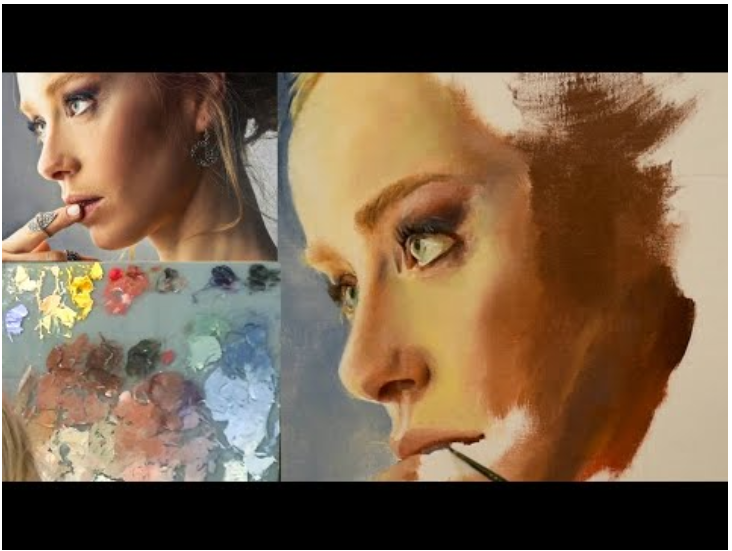
What is it about oil painting portraits that have captivated audiences for centuries? These artistic creations skillfully capture the essence of their subjects with an unmatched depth and realism. From the resplendent treasures of the Renaissance to the avant-garde creations of the contemporary age, oil portraits transcend the mere portrayal of their subjects. Instead, they venture on an inward odyssey, delving into the profound realms of both the subject’s and the artist’s inner essence. This article explores the multifaceted world of oil painting portraits, uncovering the secrets behind their endless charm and appeal.
- The Historical Significance

Oil portraits are more than mere artistic expressions; they serve as visual narratives of history. Each stroke on the canvas is a testament to the era it represents, capturing the essence of societal values, fashion trends, and political climates of the time. These paintings are like windows to bygone eras, offering insights into history beyond written records. Such portraits were artistic declarations and reflections of societal hierarchy and roles during the Renaissance. They showcased the prestige of the elite, adorned with symbols of wealth and power like lavish attire, elaborate jewelry, and emblems of nobility, providing a vivid glimpse into the period’s social dynamics and cultural ethos.
In today’s world, couple oil painting drawings are a cherished form of art, symbolizing love and connection rather than status. These modern portraits capture partners’ unique bond and intimacy, often marking significant life events like anniversaries or engagements. More than just a visual representation, they are a deeply personal expression of affection, combining traditional painting techniques with contemporary styles. Such artworks stand out in an era dominated by digital images, offering a timeless and artistic testament to the couple’s journey together.
Portraits often served as tools in politics and diplomacy. They were used to build alliances, arrange marriages, and demonstrate power. A picture sent to a foreign court could convey a ruler’s or noble’s appearance, status, and even intentions. These paintings were crucial in shaping and conveying political messages and personas in an age without photography or mass media.
- Technical Mastery and Innovation

This technique allows for various textures and layers, enabling artists to achieve lifelike details and subtle gradations in color. This medium has evolved over centuries, with artists constantly innovating to enhance their work’s realism and emotional depth. Exploring different techniques used in oil portraits reveals a timeline of artistic ingenuity.
- Masters of Satire: Caricature Elements in Classic Oil Paintings

Hogarth: Marriage A-la Mode | Tea in a Teacup 1745
While caricatures are commonly associated with quick sketches, some renowned artists have subtly incorporated caricatural elements into their custom oil paintings.
- Leonardo da Vinci: Known more for his caricature sketches, Leonardo demonstrated a flair for exaggeration and humor.
- William Hogarth: An 18th-century painter, Hogarth’s works, such as the “Marriage A-la-Mode” series, subtly critique society with exaggerated features.
- Honoré Daumier: Famous for his lithographs, Daumier’s oil paintings also carry a caricatural tone, critiquing French politics and society.
- Diego Velázquez: In “Portrait of Pablo de Valladolid,” Velázquez employs dramatic faces and gestures, bordering on caricature.
- Francisco Goya: Goya’s later works, including the “Caprichos” and “Disparates” series, blend realism with satire and exaggeration.
These artists skillfully merged realism with caricature in their hand-painted art, adding a layer of satire and critique to their art.
- Depth and Expression
The most charming aspect of oil portraits is their power to transmit emotion. Artists use color, light, and composition to express the subject’s inner world, often revealing more about the person’s character and mood than words could ever convey.
- Status Symbols
Historically, the wealthy and powerful often commissioned oil portraits to display status. These paintings, often embellished with symbols of power, wealth, and intellect, were a way to immortalize oneself and one’s family for posterity.
- The Personal Touch in Modern Commissions
Today, commissioning an oil portrait is a deeply personal affair. Whether it’s a family heirloom, a tribute to a loved one, or a self-portrait, these works connect to our identity and personal history.
- Interior Design

A hand-painted portrait from a photo adds elegance and essence to any space in interior design. Be it a timeless or contemporary artwork, it has the potential to act as a stunning focal point, introducing a measure of refinement to the decor.
These gems, steeped in historical significance, emotional resonance, and technical mastery, consistently captivate and inspire. They bridge our historical heritage with the contemporary world and are enduring symbols of human resilience and spirit. Displayed in galleries, decorating the walls of homes, or emerging from an artist’s studio, this depiction powerfully encapsulates the human experience, continuing to be a potent tool for expressing the depth and diversity of humanity.

